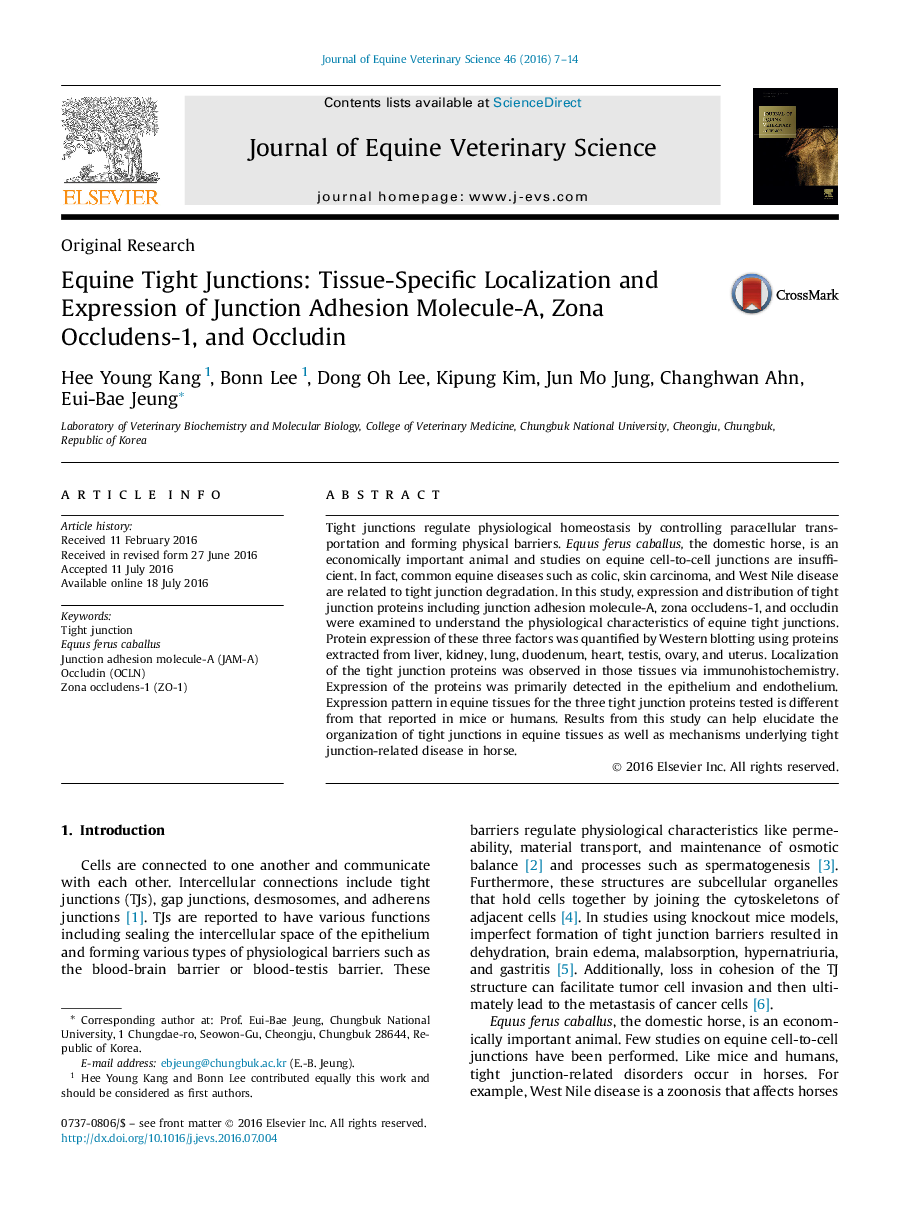| Article ID | Journal | Published Year | Pages | File Type |
|---|---|---|---|---|
| 8483419 | Journal of Equine Veterinary Science | 2016 | 8 Pages |
Abstract
Tight junctions regulate physiological homeostasis by controlling paracellular transportation and forming physical barriers. Equus ferus caballus, the domestic horse, is an economically important animal and studies on equine cell-to-cell junctions are insufficient. In fact, common equine diseases such as colic, skin carcinoma, and West Nile disease are related to tight junction degradation. In this study, expression and distribution of tight junction proteins including junction adhesion molecule-A, zona occludens-1, and occludin were examined to understand the physiological characteristics of equine tight junctions. Protein expression of these three factors was quantified by Western blotting using proteins extracted from liver, kidney, lung, duodenum, heart, testis, ovary, and uterus. Localization of the tight junction proteins was observed in those tissues via immunohistochemistry. Expression of the proteins was primarily detected in the epithelium and endothelium. Expression pattern in equine tissues for the three tight junction proteins tested is different from that reported in mice or humans. Results from this study can help elucidate the organization of tight junctions in equine tissues as well as mechanisms underlying tight junction-related disease in horse.
Keywords
Related Topics
Life Sciences
Agricultural and Biological Sciences
Animal Science and Zoology
Authors
Hee Young Kang, Bonn Lee, Dong Oh Lee, Kipung Kim, Jun Mo Jung, Changhwan Ahn, Eui-Bae Jeung,
